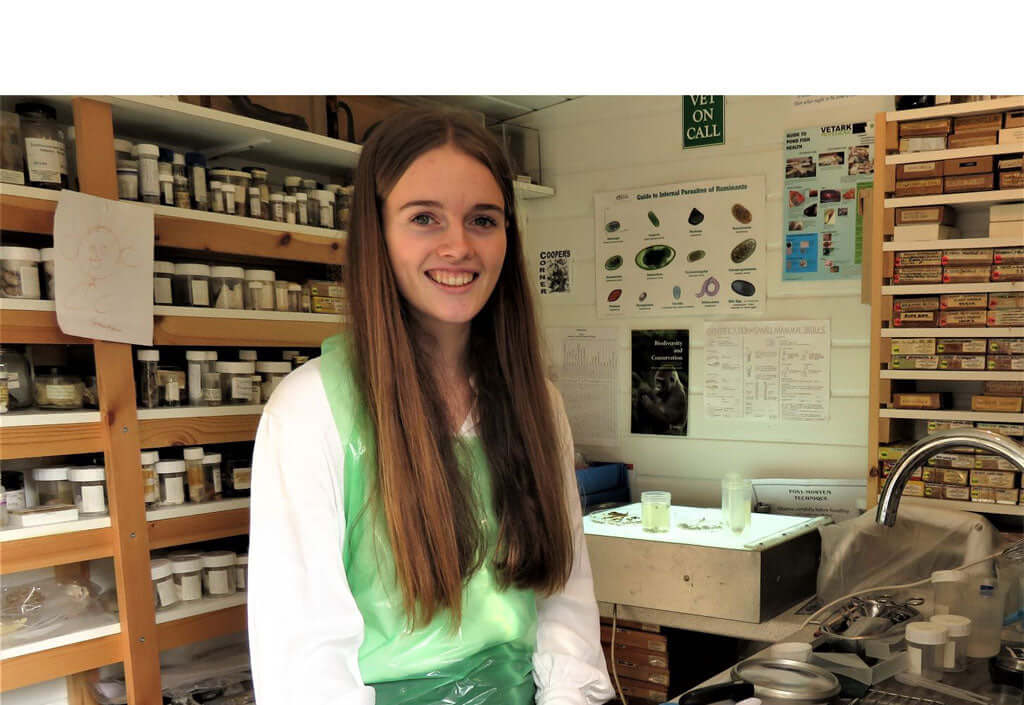
Healthy diets, healthy birds; a recent student project carried out for Haith’s
Share
Readers will be aware that Haith's has always prided itself on the quality of its bird diets. In the early days, following the establishment of John E Haith’s in Grimsby in 1937, the emphasis was on using clean raw products (mainly seeds), packaging products hygienically, and responding promptly to any concerns expressed by customers. This system became increasingly linked with careful attention to the cleaning of seeds and in-house checks on products intended for birds, wild or captive.
Since 2012 the company has had its own quality control (QC) programme that is overseen by its veterinary advisor, Professor John E. Cooper FRCVS. Samples of Haith's products are examined using laboratory tests which include studies on appearance, odour, consistency, flotation (which helps detect any residual dust/other particulate matter), microscopical examination of smears, bacteriological and mycological (fungal) culture and repeated checks for beetles, mites or other unwanted invertebrates.
The quality control (QC) programme has not only helped ensure the integrity and safety of Haith's diets; it has also had an educational role. Staff at Haith's have learnt how to carry out simple tests and record their findings. Demonstrations and presentations have taken place at Cambridge University and the annual conference of BIAZA (The British and Irish Association of Zoos and Aquariums) in order to show what Haith's is doing to enhance the quality and acceptability of its various bird foods.
Nearer home, Professor Cooper’s own small laboratory in Norfolk has provided training opportunities for students, including Emily Neep, who helped implement and assess protocols and went on to train as a veterinary surgeon. More recently, in late 2021, Ella Stonebanks, another university “hopeful”, spent time in this laboratory doing a project aimed at investigating the quality of a consignment of the Haith’s product, “Sunflower Hearts”:
Sunflower Hearts: premium-quality for garden birds (haiths.com)
The methods used by Ella to examine the sample followed those described by Professor Cooper ten years’ ago (Cooper, J. E. (2012). The case for greater quality control. Cage and Aviary Birds. June 13th. 6) and described in more detail four years’ later in a chapter in an authoritative textbook (Cooper, J.E. (2016). Section on diet (The importance of diet quality. Laboratory testing and investigation of diets. In Samour, J. Editor. Avian Medicine. 3rd Edition. Elsevier, USA).
Below is a brief summary of Ella’s project and her findings.
Initially, a risk assessment was drawn up, under the guidance of Mrs Margaret Cooper, to assess the relevant hazards associated with working under laboratory conditions. Throughout the investigation, COVID-19 precautions were taken for the safety of the participants involved.
Following on from this, a preliminary study, a “trial run”, was devised to enable Ella to become familiar with the required laboratory methods. This was carried out using seeds of unknown origin and status that had fallen from local bird feeders (Figure 1.).

Figure 1. Ella collects seed for her preliminary (“trial run”) study from under a bird feeder.
A consignment of “Sunflower Hearts” was then received from Haith's,
In the laboratory the seed was examined carefully using a hand-held magnifying glass held in. It appeared to be of good quality and no damage was seen when using a hand-lens (magnifying glass).
Subsequent investigations (Figure 2.) involved the use of a range of equipment and reagents. A standard four-page examination form, devised by Haith’s and its veterinary advisor, was completed at each stage of the study and used to compile a final report.

Figure 2. Ella working in the laboratory – recording her latest findings. The samples under investigation using the flotation method can be seen on the illuminated screen at the back.
The findings were encouraging. There was no obvious sign of abnormalities or unacceptable odour. Flotation tests indicated that most of the “Sunflower Hearts” were of normal density and sank rapidly. A few husks continued floating but this is normal. The fluid in the flotation tubes was clear and there was no visible evidence of dust particles on the surface (meniscus) when examined carefully using the hand-lens.
Agar plates were inoculated with a small number of seeds. Small numbers of bacterial and fungal colonies grew but these were normal air-borne contaminants.
A small number of seeds was crushed, their contents dissected and smears made and stained. Microscopical examination of these confirmed normal (mainly starch) contents and no defects or abnormalities.
In a summarised report to Haith’s, Professor Cooper stated “We found no abnormalities and my conclusions are that, on the basis of the tests performed, this sample of Sunflower Hearts is of high quality and suitable for the purpose of feeding free-living and captive birds”.
To conclude, this study provided useful experience for Ella (in a follow-up letter she said “I wanted to thank you for all your help and guidance throughout the past few months. I am incredibly grateful for all your effort and time spent making sure I get the most out of this experience”) while, at the same time, contributing on a small scale to Haith’s regular checking of its products in the interests of birds and those who care for them.
John E. Cooper
16th February 2022
